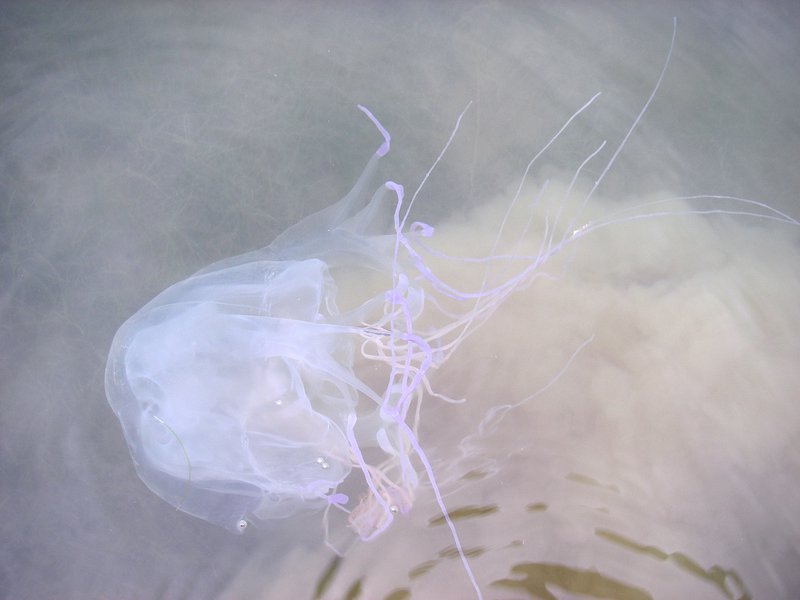
The box-shaped jellyfishes spotted in the region are most likely jimbles. Photo: Mat Fisher.
Ocean-goers have nothing to fear despite the appearance of box-shaped jellyfishes on the South Coast in recent weeks.
While cousins of the deadly Northern Australian box jellyfish, the smaller jellies that have been spotted at Long Beach, Moruya and Bermagui Harbour in recent days are more likely to be jimbles, which belong to the Cubozoan order of jellyfish and have a box-shaped bell with one tentacle at each corner.
The jimble (Carybdea rastoni) is harmless and lives in coastal waters, estuaries and oceans, from Western Australia to southern Queensland. It is the only Cubozoan that occurs in the colder southern Australian waters and is often found in large numbers in Sydney Harbour.
The alarm was raised over the weekend after Mat Fisher spotted the first of two box-shaped jellyfish while walking on the wharf at Bermagui Harbour on 6 October.
He spotted the second at Moruya’s Preddy’s Wharf the following night.
“Saturday night I was fishing with a friend from Darwin and saw the other one and he said it was definitely a box jelly,” Mat said.
He sent a photo and video of the jellyfish to the NSW Department of Primary Industries (DPI) Fisheries for identification because, he said, after researching similar species online, he was “undecided what to make of it”.
He also posted a warning on Facebook community noticeboards because he wanted to “warn others” of the possible lethal visitor.
A DPI spokesperson who examined Mat’s photos said the species in the image was “most likely a jimble”.
“They’re a type of box jellyfish common around temperate Australia. They sting but are not dangerous,” the spokesperson said.
The spokesperson said it was not the dangerous box jellyfish from the north.
“You can clearly see that it has more tentacles than the one shown in [Mat’s] image,” they added.

The deadly box jellyfish or sea wasp is found in northern parts of Australia. Photo: Australian Museum.
The spokesperson said the jimble was not dangerous.
“It does sting but the venom potency is nowhere near as potent as its tropical relatives,” the spokesperson said.
“The jimble can still deliver a painful sting. If stung, wash the area with vinegar and apply a cold pack to relieve the pain. Seek medical attention if necessary.”
The find comes after a mystery box jellyfish was spotted off Cronulla in May 2022, with experts suspecting it was an Irukandji (Carukia-barnesi), a small member of the Carybdeid sea jellies, whose sting causes Irukandji Syndrome.
According to the Australian Museum, the Irukandji is swept inshore by winds and currents year-round, more frequently in summer, and is found rarely off Sydney and Melbourne.
A third type of box jellyfish, commonly referred to as the Moreton Bay stinger (Morbakka fenneri) or fire jelly, is also found along the east coast of Australia, from Port Douglas to Sydney, but mostly to the north in Moreton Bay, where it was first discovered.
A sting from the Morbakka can also cause Irukandji Syndrome symptoms, which include severe lower-back pain, vomiting, breathing difficulties, profuse sweating, severe cramps and spasms, and a feeling of impending doom.
In comparison with the three smaller species above, the infamous Chironex fleckeri, commonly called the Northern Australian box jellyfish or sea wasp, is the largest and most venomous of the box jellyfish. It has a transparent, box-shaped bell and up to 60 tentacles in four clumps along the base of the bell. The tentacles can be up to three metres in length.
If the sting from a box jellyfish covers more than 10 per cent of the human body, it’s often fatal. There is an antidote, but it needs to be administered quickly.
The species occupies the tropical Australian coastal waters from Western Australia through the Northern Territory to Queensland.
There are more than 50 species of box jellyfish in the world.






